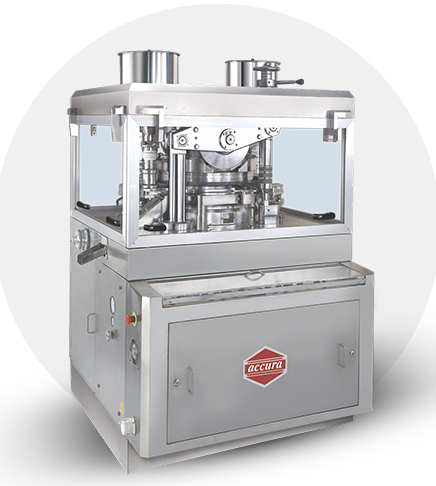The pharmaceutical industry is undergoing significant transformations globally, with technological advancements playing a key role in enhancing the quality, efficiency and safety of drug production. Among the most prominent innovations in this sector is tablet coating technology. As pharmaceutical manufacturers in emerging markets seek to meet rising consumer demands and adhere to international standards, the adoption of coating technologies is gaining momentum, particularly in regions like Latin America.
Countries like Mexico and Argentina are at the forefront of this technological shift, leveraging modern coating systems to produce high-quality, effective and consumer-friendly medications. In this article, we will explore the adoption of coating systems in these Latin American markets, focusing on the opportunities, challenges and market dynamics that come with their integration into local pharmaceutical manufacturing processes.
The Rise of Pharmaceutical Manufacturing in Latin America
Pharmaceutical Market Growth in Latin America
Latin America is home to one of the most dynamic pharmaceutical markets in the world. The region, which includes key countries such as Mexico, Brazil and Argentina, is experiencing robust growth in both pharmaceutical production and consumption. Factors contributing to this growth include an expanding middle class, increased access to healthcare and the rising demand for high-quality medications, both branded and generic.
With a growing population and higher healthcare expenditure, Latin American countries are increasingly looking to modernize their pharmaceutical manufacturing processes to meet both local and global standards. As a result, manufacturers are increasingly turning to advanced technologies to improve the quality, efficacy and aesthetics of their products.
The Shift Toward Modern Pharmaceutical Technologies
As the pharmaceutical sector in Latin America becomes more sophisticated, manufacturers are investing in cutting-edge technologies to ensure that their products meet the expectations of both domestic consumers and international markets. One of the key technologies being adopted is tablet coating machine, which is used to apply protective or functional coatings on tablets. These coatings serve various purposes, including enhancing drug release profiles, improving stability and masking undesirable tastes.
The adoption of this technology allows Latin American manufacturers to produce high-quality tablets with enhanced therapeutic benefits and a more appealing appearance, which is crucial for patient compliance.

Why Latin America is Embracing Coating Technology?
Market Opportunities Driving the Adoption
The increasing adoption of coating systems in Latin America is driven by several key market opportunities:
- Growing Demand for Generics: As healthcare access expands in Latin America, the demand for generic drugs is rising. Generic medications must meet rigorous standards for quality and efficacy and coating technology is essential in ensuring these products meet such standards. Coatings can protect sensitive active pharmaceutical ingredients (APIs), improve drug release profiles and offer a more aesthetically pleasing appearance, making generics more competitive in the market.
- Improved Drug Delivery Systems: The ability to create tablets with controlled-release or delayed-release mechanisms is a key factor driving the adoption of coating systems. In Latin America, the growing demand for extended-release formulations is pushing manufacturers to invest in advanced technology that can deliver drugs more effectively, providing sustained therapeutic effects and improving patient outcomes.
- Competitive Advantage: With increasing competition both locally and globally, Latin American pharmaceutical manufacturers are investing in technology that allows them to differentiate their products. The ability to produce high-quality, visually appealing tablets with advanced coating systems can help manufacturers stand out in a crowded market.
Technological Advancements in Coating Machines
As the demand for tablet coating systems grows, technological advancements are continuously enhancing the performance and efficiency of these systems. Modern coating machines are equipped with features such as:
- Automated Coating Control: Many advanced coating systems now feature automated systems that monitor and control coating parameters in real time, such as coating thickness, drying temperature and spray rates. These features improve consistency and reduce human error.
- Improved Coating Materials: New coating materials offer better protection against moisture, light and oxidation, which can degrade sensitive APIs. These materials also allow for improved drug release and patient compliance by providing customized release profiles.
- Energy Efficiency: Modern coating equipment is designed to be energy-efficient, reducing operational costs and making the equipment more accessible for smaller manufacturers in emerging markets.
- Better Production Speed and Flexibility: High-speed coating systems allow manufacturers to increase production capacity without compromising on tablet quality, which is essential for meeting growing demand in Latin America.
Challenges in Adopting Coating Technology in Latin America
High Initial Investment Costs
One of the primary challenges faced by Latin American pharmaceutical manufacturers in adopting coating technology is the high initial investment cost. Coating machines are advanced and often expensive pieces of equipment that require significant capital to purchase and install. For smaller and mid-sized manufacturers, this can be a significant barrier to entry.
However, as the demand for high-quality pharmaceutical products increases, manufacturers are increasingly viewing the investment in coating systems as essential for staying competitive in both domestic and international markets. Additionally, the return on investment (ROI) from improved product quality and expanded market access may help offset the initial costs over time.
Lack of Skilled Workforce
The adoption of modern coating systems also presents a challenge in terms of the need for skilled labor. Operators must be trained to manage and maintain the equipment effectively and the lack of technical expertise in certain parts of Latin America can slow down the integration of this technology. To address this challenge, coating machine manufacturers and suppliers must offer robust training programs and support to ensure that local operators can optimize the use of these systems.
Regulatory Compliance and Standardization
While regulatory standards for pharmaceuticals in Latin America are becoming more stringent, there is still variation in the enforcement of these standards across different countries. Manufacturers in the region must navigate diverse regulatory environments, which may impact the adoption of advanced technology. Inconsistent enforcement of regulations can also create challenges for manufacturers seeking to export their products to global markets that demand high-quality standards.




